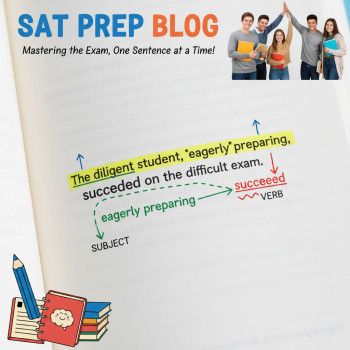Why a Gap Year Can Be the Perfect Time to Improve Your SAT Score
Taking a gap year often feels like a breath of fresh air after the marathon of high school. But if your college plans still hinge on the SAT, that break can be the most productive year of your academic life—if you treat it wisely. A gap year gives you time to build momentum without the pressure of concurrent schoolwork. You can devote focused weeks to concept mastery, weave practice tests into real life, and sculpt the kind of confident test-taking stamina that rarely develops during a busy school year.
This post is a friendly, practical guide—part planner, part pep talk—to help you turn a gap year into a strategic SAT advantage. You’ll get diagnostics, month-by-month timelines, daily routines, study strategies for each section, ideas for blending travel or work with prep, and ways to measure progress. I’ll also point out where one-on-one guidance like Sparkl’s personalized tutoring and AI-driven insights can plug into your plan naturally, if you want extra support.
Start Smart: First Month Diagnostic and Goal-Setting
Take a Real Practice Test
The first tangible step is simple but essential: take a full, timed, official practice SAT under realistic conditions. This baseline gives you a score to beat and, more importantly, shows where you bleed points.
- Simulate test-day timing and breaks.
- Score by section (Reading, Writing & Language, Math) and note question types missed.
- Create an error log: record the question, why you missed it, and how to fix that mistake.
Set an Ambitious but Realistic Target
Turning a vague “get better” into a numerical target matters. If you scored 1100, maybe your target is 1250. If you’re already at 1400, 1500 might be a stretch goal. A gap year gives you room to aim higher than what would be realistic amid a busy school year.
Make your target SMART: Specific, Measurable, Achievable, Relevant, and Time-bound.
Month-by-Month Gap Year Plan (12-Month Roadmap)
Below is a general roadmap you can adapt. Some students will need more foundational work; others will spend more time refining test strategies. Think of it as a scaffold—you’ll revisit earlier phases as you go.
Months 1–2: Foundations and Habit Building
- Review core math concepts: algebra, linear equations, functions, and basic geometry.
- Rebuild reading stamina with daily passages (30–45 minutes).
- Start a consistent test-day routine: wake time, test-like breakfast, and timed practice blocks.
Months 3–6: Targeted Skill Work
- Use your error log to target weak areas—coordinate geometry, sentence structure, or data interpretation.
- Introduce mixed practice sets: 60–90 minute blocks covering multiple sections.
- Take one practice test every 2–3 weeks and spend the following week reviewing mistakes in depth.
Months 7–9: Volume and Realism
- Increase to a practice test every 1–2 weeks if fatigue allows; alternate full tests with focused section drills.
- Simulate full test days occasionally—start early, follow a schedule, and include real break conditions.
- Practice pacing: learn which question types consume time and how to triage them.
Months 10–11: Fine-Tuning and Peak Performance
- Polish high-leverage weaknesses (a narrow list of errors) and reinforce strengths.
- Refine test-day logistics: transportation, ID, allowed supplies, and nutrition.
- Consider one-on-one coaching like Sparkl’s personalized tutoring for final weeks—an expert can help eliminate lingering bad habits and polish timing strategies with targeted feedback.
Month 12: Taper and Test
- Reduce heavy study in the final week to avoid burnout.
- Take a light practice test several days before the real test to reassure yourself, then rest and review high-yield notes.
- Execute test-day routines you’ve practiced all year.
Daily and Weekly Routines That Work
The most effective routines during a gap year are consistent, varied, and forgiving. Below is a model weekly schedule you can adapt to your rhythm.
| Day | Morning | Afternoon | Evening |
|---|---|---|---|
| Monday | 60–90 min Math review (concepts) | 30–45 min Reading passages | Error log review + 30 min light practice |
| Tuesday | Timed Math problem set (mixed) | Writing & Language drills (grammar + structure) | 10–15 min vocabulary review |
| Wednesday | Full reading section simulation (timed) | Review mistakes + targeted skill work | Active recovery: light exercise, social time |
| Thursday | Concept review: trigonometry/geometry | Practice test question bank (mixed) | Reflection: journal what worked and what felt off |
| Friday | Timed Writing & Language section | Timed Math mini-test (no calculator) | Relaxed reading for pleasure |
| Saturday | Full practice test (every 2–3 weeks) | Thorough review of the test | Recovery + light review |
| Sunday | Rest or light review | Plan the week ahead | Free time |
Keep flexibility in the plan—some weeks you’ll do more, some weeks less. Progress over months, not perfection over days.
Section-Specific Strategies
Math: Build Conceptual Fluency and Smart Pacing
Math improvement is often the most “bang for your buck” during a gap year. With focused work, many students move 50–150 points on the Math portion alone.
- Master the frequently tested building blocks: linear equations, systems, functions, ratios, and basic geometry.
- Learn to recognize question types so you can decide quickly whether to solve immediately or skip and return.
- Practice no-calculator sections to sharpen mental math and algebraic manipulation skills.
- Use timed sets of 10–15 problems to practice pacing; later, increase to 20–30 for endurance.
Common pitfall: skipping the why. If you get a question wrong, don’t just memorize the solution—identify the concept gap and create a short drill for it.
Evidence-Based Reading & Writing: Strategy Over Speed
Reading and Writing respond well to deliberate practice and strategy refinement.
- For Reading, practice active reading: annotate main ideas and passage structure, and summarize each paragraph in a few words.
- For Writing & Language, learn common grammar rules tested on the SAT—parallelism, modifier placement, verb tense, pronoun clarity—and practice by correcting mini-passages.
- Use process of elimination aggressively. Often two answer choices are clearly wrong, and your job is to choose the better of the remaining two.
Tip: Doing a short reading passage every day—even from newspapers or books—will increase your speed and comprehension without feeling like test prep.
Practice Tests: When and How to Take Them
Practice tests are your diagnostic engine. Use authentic, full-length tests and treat them like the real thing. Early on, one every 2–3 weeks is fine. As you approach your test date, increase frequency to weekly, then taper the week before the test.
- After each test, spend two to three sessions reviewing every missed question until you understand why you chose the wrong answer.
- Look for patterns in your errors—maybe you lose points on data interpretation in Reading or on linear equations in Math.
- Keep an errors spreadsheet to track recurring weaknesses; fix those intentionally.
Balancing Gap-Year Activities with Test Prep
A gap year might include travel, internships, part-time work, or volunteer projects. Those experiences are valuable and can coexist beautifully with SAT prep if you plan intentionally.
- Integrate short, high-impact study blocks on travel days—vocabulary flashcards, a 30-minute math set, or a single Reading passage.
- If working, use mornings before shifts for concentrated study and evenings for lighter review.
- Preserve at least two mornings a week for deep focus (2–3 hours) to advance skill work.
Many students find that a hybrid model—work or travel in the afternoons, focused prep in the mornings—keeps energy high and avoids burnout.
Mindset, Sleep, and Test-Day Habits
Grit and content knowledge both matter. During a gap year you have the chance to build sustainable habits.
- Sleep: prioritize 7–9 hours a night, especially in the week before the test.
- Nutrition: practice test-day breakfasts that don’t upset your stomach—bananas, oatmeal, or a smoothie are common favorites.
- Mindfulness: 5–10 minutes of deep breathing before a practice test can reduce anxiety and sharpen focus.
Practice your entire test-day routine—wake time, breakfast, transport—to reduce surprises. Confidence often boils down to familiarity.
Tracking Progress: Metrics That Matter
Score trends are important, but also track qualitative measures:
- Percentage of avoidable mistakes (careless errors).
- Time spent per question type.
- Consistency: are your scores steady or volatile?
Here’s an example improvement plan table you can use to set milestones.
| Month | Focus | Milestone |
|---|---|---|
| 1 | Diagnostic & baseline | Complete first full practice test; set target score |
| 3 | Core concept mastery | Reduce careless Math errors by 25% |
| 6 | Practice and pacing | Increase composite score by 100 points |
| 9 | Simulation and endurance | Consistent practice test scores within target range |
| 12 | Polish & test execution | Achieve or exceed target score on real test |
How Personalized Tutoring Fits Into a Gap-Year Plan
One-on-one tutoring can accelerate your progress, especially when the calendar is flexible like during a gap year. Personalized tutors help you diagnose stubborn patterns, practice under supervision, and get feedback that’s hard to replicate on your own. If you choose tutoring, aim for a mix of regular sessions for accountability and targeted sessions before a scheduled test date.
Services like Sparkl’s personalized tutoring can be particularly useful during a gap year: tailored study plans, expert tutors who adapt pacing to your lifestyle, and AI-driven insights to target weaknesses efficiently. Use tutoring to tighten technique, address recurring errors, and to rehearse test-day strategy with someone who knows your strengths and gaps.
Common Pitfalls and How to Avoid Them
- Procrastination: the gap year’s open schedule invites delay. Anchor study to rituals—same morning, same place—to build momentum.
- Overloading: long, unfocused study days cause burnout. Shorter, high-quality sessions beat marathon cramming.
- Neglecting practice tests: content review without timed practice will leave you unprepared for pacing.
Final Weeks: Practical Prep and Confidence Building
In the last month, shift from heavy learning to execution. Do weekly full tests, maintain light focused drills, and refine logistics. If you use a tutor or platform like Sparkl, schedule a couple of intensive sessions in the final two weeks to eliminate last-minute doubts.
On test day, rely on practiced routines. Arrive early, stick to your energy plan, and remember: you’ve spent months simulating this moment. Trust the process.
Parting Advice: Make the Gap Year Work for You
A gap year is an opportunity to prepare without the typical academic load and to build long-term habits. Use this time to get curious about your mistakes, to practice deliberately, and to build a test-day routine so automatic it feels like second nature. Measure progress with both scores and habits. If you need extra accountability or expertise, targeted tutoring and personalized study plans—like Sparkl’s one-on-one guidance and AI-driven insights—can integrate naturally into your year, giving you tailored feedback without interrupting life plans.
Above all, be kind to yourself. Progress rarely moves in a straight line. Some weeks you’ll sprint; others you’ll regroup. With steady practice, realistic goals, and a plan you actually enjoy following, your gap year can convert into measurable SAT gains—and into a season you remember as both productive and balanced.


















No Comments
Leave a comment Cancel